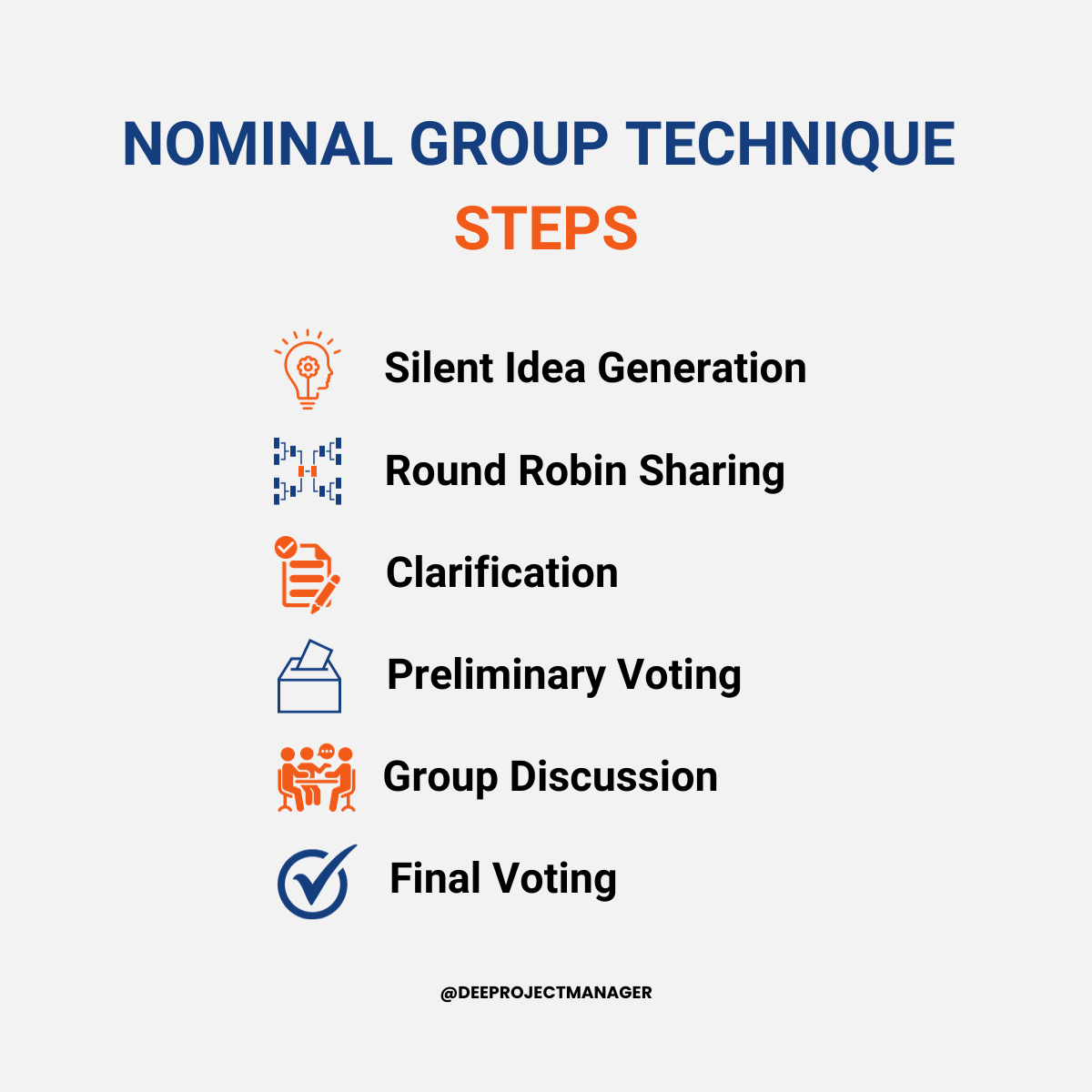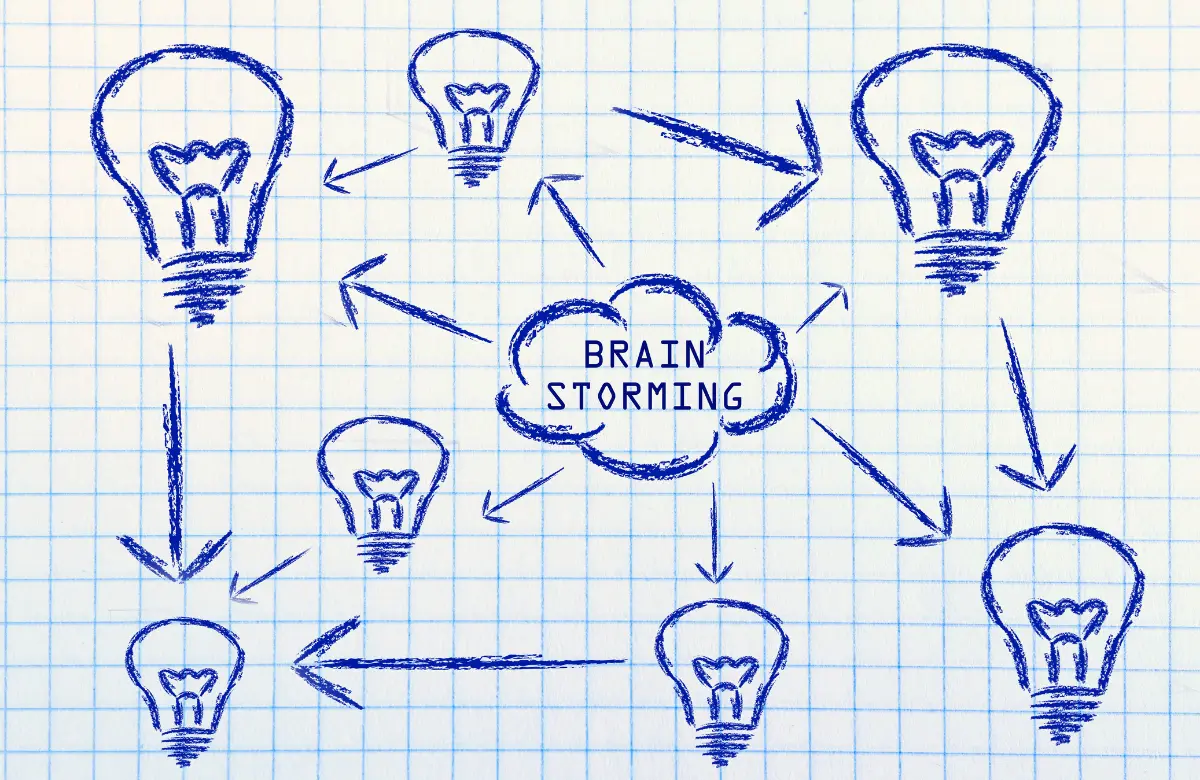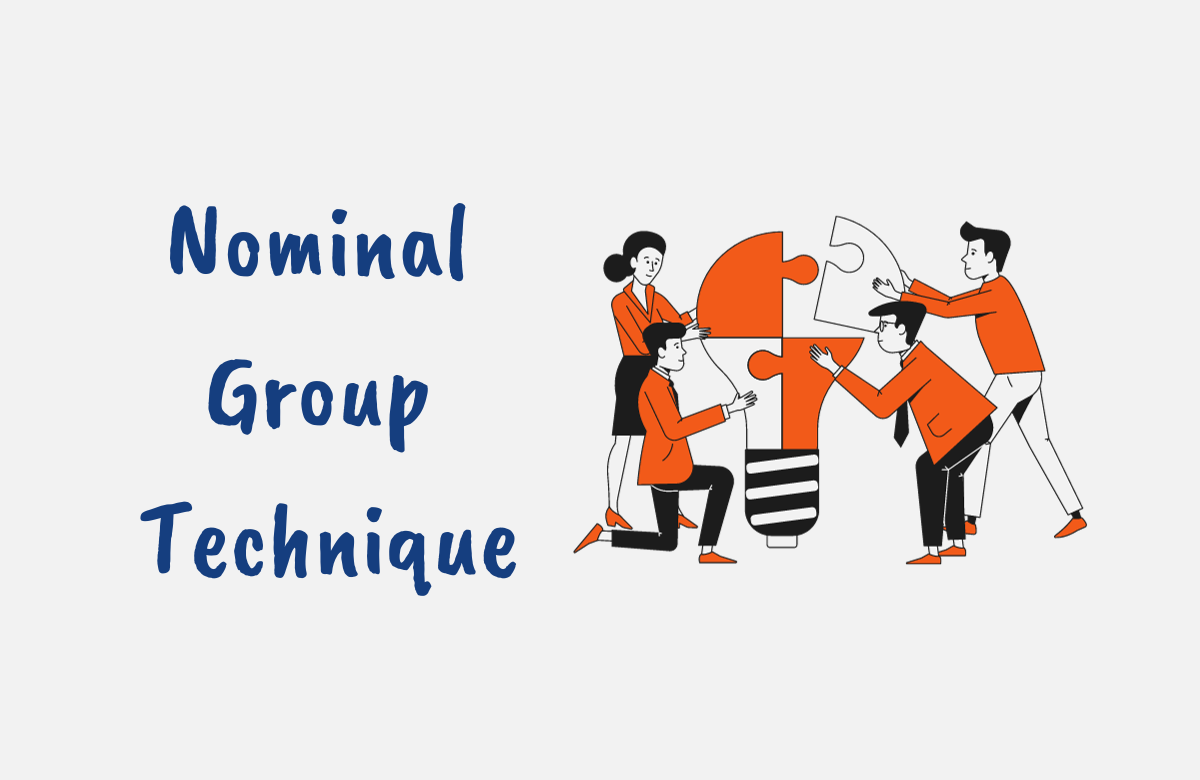As a project manager, do you often face disagreements amongst your team members that stall progress?
Gaining consensus in decision-making among people with different perspectives and ideas can be challenging.
One way to surmount this hurdle and transform the way your teams make decisions is by using the Nominal Group Technique (NGT) which is a useful project management tool for driving consensus amongst team members.
In this article, we provide insights into the Nominal Group Technique, when to use it, and how to apply it effectively. We also cover tips on this technique that will come in handy if you are preparing for your PMP certification exam.
This way, you can learn how this structured group decision-making technique can help your team gain alignment on important project decisions through facilitated discussion and voting.
What is the Nominal Group Technique?
The Nominal Group Technique (NGT) is a structured facilitation method for driving consensus in small group settings by giving each person an equal voice to drive efficiency and fairness in decision-making.
Developed in 1971 by Andre Delbecq and Andrew Van de Ven, it’s designed to build agreement objectively by generating and prioritizing solutions through orderly discussion and voting and preventing influential personalities from dominating the discussion.
The technique follows a highly structured process with defined steps:
- Silent generation of ideas in writing
- Round-robin feedback on ideas
- Group clarification of ideas
- Preliminary voting on ideas
- Discussion of top-ranked ideas
- Final voting
The output is a set of prioritized solutions or recommendations reflecting the group’s preferences aggregated mathematically.
NGT brings order to the subjectivity of group problem-solving replacing guesswork with a data-driven approach to build consensus efficiently and can be applied to a wide range of purposes from problem diagnosis to identifying alternatives.

Nominal Group Technique Steps
The power of the Nominal Group Technique lies in its structured facilitation process. By following the defined steps, groups can leverage NGT to build consensus efficiently.
The key steps are:
Silent Idea Generation
The facilitator presents an issue or problem statement and asks individuals to silently write down their ideas or solutions.
This independent brainstorming ensures equal participation without influence from others. Then allow 5-10 minutes for silent idea generation.
Round Robin Sharing
Each person shares one idea verbally in a round-robin format. Ideas are recorded publicly by the facilitator as they are shared. No discussion happens yet, just a collection of all responses.
Clarification
The facilitator reviews each idea for clarity and understanding. Group members can ask questions to better comprehend the ideas presented.
Preliminary Voting
Each individual privately ranks a subset of the top ideas, typically their top 5. The facilitator tallies the total scores for each idea.
Group Discussion
The top-ranking ideas are discussed more deeply as a group. The facilitator may ask for pros/cons, feasibility concerns, or implementation suggestions.
Final Voting
After discussion, the group re-votes to produce a final prioritized list of solutions. This represents the aggregated preferences of the group.
Following these steps brings structure and objectivity to problem-solving. The output is a data-driven ranking of ideas that the group is aligned on.

When to Use the Nominal Group Technique
The Nominal Group Technique is extremely versatile and can be applied in various situations.
Here are common examples of when NGT can be useful:
- Brainstorming solutions to a complex strategic problem
- Prioritizing a set of proposed project requirements
- Evaluating and ranking risks facing your project
- Developing a list of corrective actions for process improvement
- Diagnosing the root causes of an issue your team is facing
- Forecasting sales projections from a group of regional managers
- Gathering input on new policy decisions from key stakeholders
- Condensing a large set of ideas into a focused action plan
- Building consensus on any important project decision
Essentially, anytime you need to drive alignment, avoid groupthink, and make an informed choice amongst a set of options, NGT can help.
The technique is especially beneficial when dealing with complex problems that require leveraging diverse perspectives from experts or stakeholders.
By systematically collecting input and measuring group preferences, NGT removes bias and guesswork from group decision-making.

How to Use the Nominal Group Technique
To conduct an effective Nominal Group Technique (NGT) session, follow these key steps:
Define the Issue or Problem
Clearly frame a question or problem statement for the group to address. This keeps the NGT session focused.
Assemble a Facilitator and Participants
- Facilitator: The facilitator Leads the NGT process in an unbiased way. This is often someone not involved directly with the project.
- Participants: The participants are typically 5-9 people with diverse perspectives related to the issue. It can be a project team, stakeholders, subject matter experts, etc.
Explain the NGT Process
Set expectations for the session by explaining the purpose, steps, and ground rules of NGT to the group emphasizing the concept of equal participation.
Silent Idea Generation
Give individuals 5-10 minutes to silently write down their ideas or solutions related to the defined issue.
Round Robin Sharing
Go around the room and have each person share one idea verbally. The ideas are to be recorded publicly. Repeat until all ideas are shared.
Seek Clarification
Review the ideas generated for clarity. Participants can ask questions to understand any idea better.
Preliminary Voting
Have individuals privately rank their top 5 ideas from the list. Then tally the scores to identify the top-ranked solutions.
Facilitate Group Discussion
Discuss the top 5-7 ideas as a group. Seek pros/cons, weigh feasibility, and combine related solutions.
Final Voting
Conduct a final vote on the ideas after discussion. This produces a ranked list.
Debrief
Review the final prioritized solutions and how the process went. Gain commitment to actions.
Following this NGT process will give your team an inclusive, data-driven approach to making aligned decisions on complex issues.
The output is a set of ranked solutions reflecting the aggregated, unbiased wisdom of the group.

Nominal Group Technique Example
For clarity, let’s walk through a Nominal Group Technique example. A software company needs to decide which new features to include in the next product release.
The product manager then assembles a group of 5 key cross-functional stakeholders including engineering, UX, sales, and support.
First, each person silently brainstorms new feature ideas individually. Next, they share their lists in a round-robin style, producing a master list of 25 proposed features.
After clarifying the ideas, each person privately ranks their top 5 most important features. The votes are tallied to identify the top 7 ranked features.
The group discusses the merits and challenges of these 7 features. Finally, they revote after the discussion to ultimately prioritize the top 5 features considering all perspectives.
This becomes the NGT output – an aligned, data-driven ranking of the features to include in the product release.
Advantages and Disadvantages of the Nominal Group Technique
The Nominal Group Technique (NGT) offers many benefits for group decision-making but also has some limitations to consider.
Advantages of Nominal Group Technique include:
- Encourages Equal Participation: NGT prevents dominant personalities from taking over and gives everyone a voice.
- Generates More Comprehensive Ideas: Individual silent idea generation taps into all group members’ perspectives.
- Provides Structured Analysis: Steps guide the systematic evaluation of ideas vs raw debate.
- Removes Bias: Ranking by voting measures group preferences mathematically and objectively.
- Saves Time: The process focuses discussion on a prioritized subset of top ideas.
- Builds Consensus: Results in an aligned set of solutions reflecting the group’s preferences.
- Uncovers Hidden Ideas: Introverts share ideas they may not raise verbally in open debate.
- Produces Quantitative Data: Numerical voting data gives insights into group preferences.
- Easy to Facilitate: Clear process steps make it accessible even for new facilitators.
Its disadvantages include:
- Time-consuming: The full NGT process can take several hours with a group.
- Reduced Spontaneity: Structured format limits free-flowing idea exchanges.
- De-emphasizes Dialogue: Focuses more on individual thinking than conversation.
- Not Ideal for Complex Issues: Requires fairly clear potential solutions upfront.
- Risk of Manipulation: Dominant voices could still influence others’ voting.
- Recommendations May be Diluted: Seeking consensus could dilute novel ideas.
- Requires Skillful Facilitation: Success is heavily dependent on the facilitator.
- Not Universally Applicable: Less effective for some personalities and cultures.
Consider the advantages and limitations before determining if NGT is the right technique for your situation. It can work exceptionally well when facilitated adeptly for the appropriate issues.

Nominal Group Technique vs Brainstorming
Nominal Group Technique (NGT) and Brainstorming are two common techniques for generating ideas in groups.
They however have some key differences between them including:
Structured Process
NGT follows a highly structured facilitated process with defined steps including silent idea generation, round-robin feedback, clarification, and multiple stages of voting.
The output is a mathematically derived ranking of prioritized solutions the group agrees on.
In contrast, Brainstorming has no pre-defined structure or voting. It is an open group discussion to produce as many creative ideas as possible.
Participation Equality
NGT brings order and fairness to idea sharing. All group members contribute equally with the structured steps which removes bias and prevents domineering personalities from taking over.
Brainstorming often follows the natural dynamics of the group which can allow more vocal members to dominate the conversation.
Time and Consensus
NGT consumes more time with its multiple stages but is very effective for building consensus on complex issues or sensitive decisions requiring group alignment.
Brainstorming happens more freely and quickly but does not lead to a defined consensus or prioritization of ideas.
While both techniques have their place in generating ideas effectively and building agreement, you need to understand when your group needs open-ended brainstorming vs structured Nominal Group Technique discussions to drive alignment.
Nominal Group Technique vs Delphi Technique
Similarly, the Nominal Group Technique (NGT) and Wideband Delphi Technique are two common group decision-making processes with distinct approaches:
Interaction Method
NGT involves in-person, real-time facilitated discussions, and voting with the experts co-located for efficient verbal exchange.
While the Delphi technique uses anonymous written surveys completed individually in isolation. Experts can be geographically dispersed using this technique.
Structured Process
NGT has a highly structured process with defined steps like silent idea generation, clarification, and multi-stage ranked voting.
In contrast, the Delphi technique follows an iterative survey process with controlled feedback provided between rounds as experts refine their perspectives.
Consensus Building
NGT’s direct verbal interaction aims to build equal participation and consensus through structured facilitation.
While Delphi technique enables individual views to be adjusted based on anonymized group data over the survey rounds to work toward consensus.
Efficiency
NGT offers efficient decision-making through real-time interaction and voting with co-located experts. Delphi requires more time with multiple survey rounds but can include remote experts.
Overall, both techniques have value for objective group problem-solving. The onus lies on you to select the approach that best fits your situation and resources.

Nominal Group Technique PMP Tips
Per the PMBOK Guide, the Nominal Group Technique is an important tool for project managers to be familiar with for the PMP exam.
It is used for decision-making in a lot of project management processes including:
- Collect Requirements in Project Scope Management
- Plan Quality Management in Project Quality Management
- Estimate Activity Duration in Project Schedule Management
- Estimate Costs in Project Cost Management
For the PMP exam, remember that NGT is not a voting process but a method to rank the most important ideas. It starts with silent idea generation, then round-robin sharing, discussion for clarity, and finally individual ranking or rating.
This technique is particularly useful when some group members are much louder or more dominant than others.
It ensures all voices are heard, preventing the loudest opinions from dominating the discussion.
Understanding the nuances of NGT and how it is applied in project management processes will enhance your PMP exam readiness.
Remember, the goal of NGT is to foster equal participation while quickly reaching consensus.
Conclusion
The Nominal Group Technique (NGT) offers a structured approach to facilitate efficient consensus-building in group settings.
By giving each participant an equal voice through silent idea generation and multi-stage voting, NGT produces an objective, data-driven ranking of solutions.
While not appropriate for all situations, NGT is an impactful tool when groups need to leverage diverse expertise to drive alignment on key decisions or problem-solving.
With careful facilitation, teams can leverage NGT processes to tap collective wisdom and make choices fairly, free of bias thus bringing order and rigor to complex collaborative decision-making.





